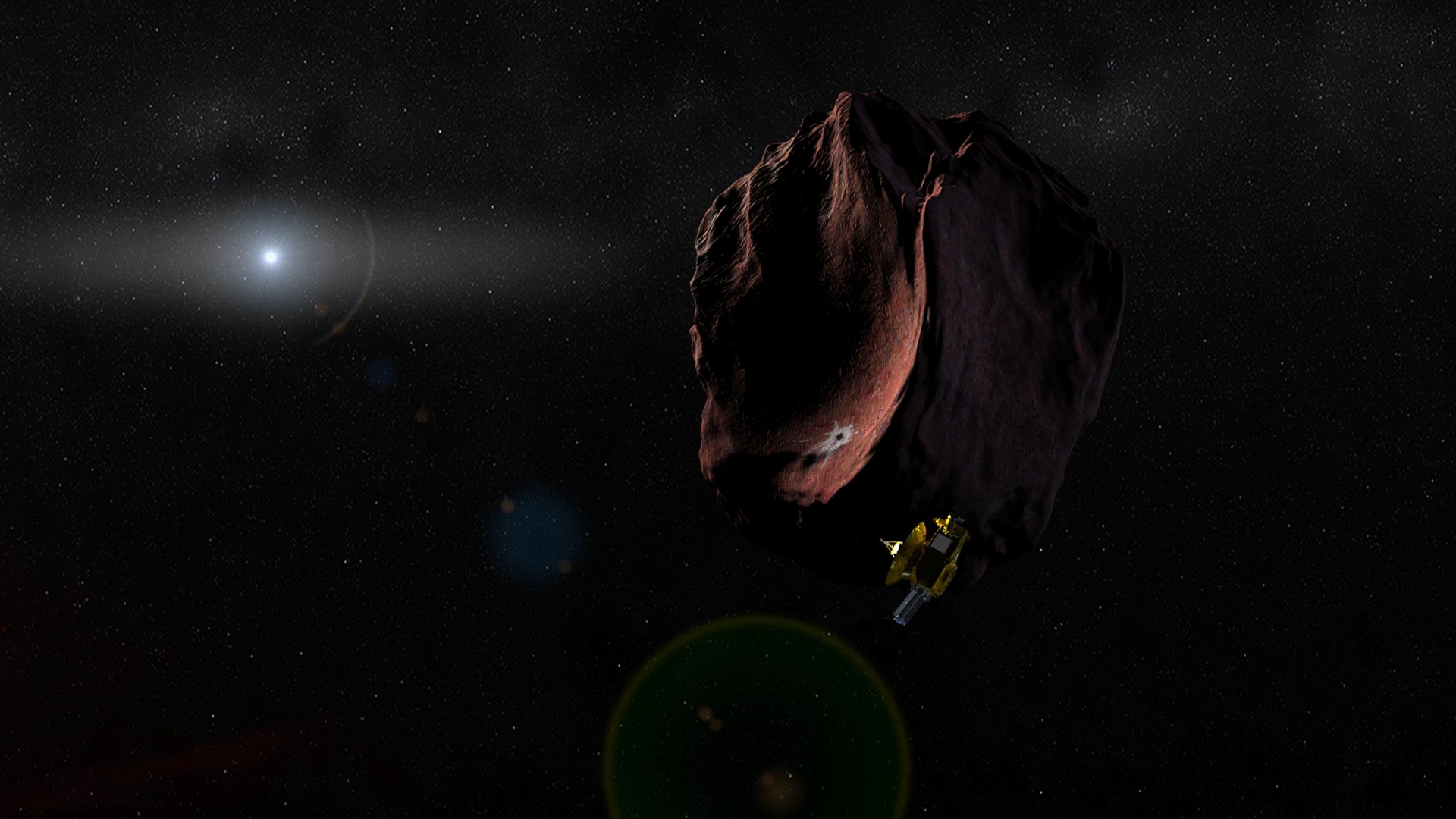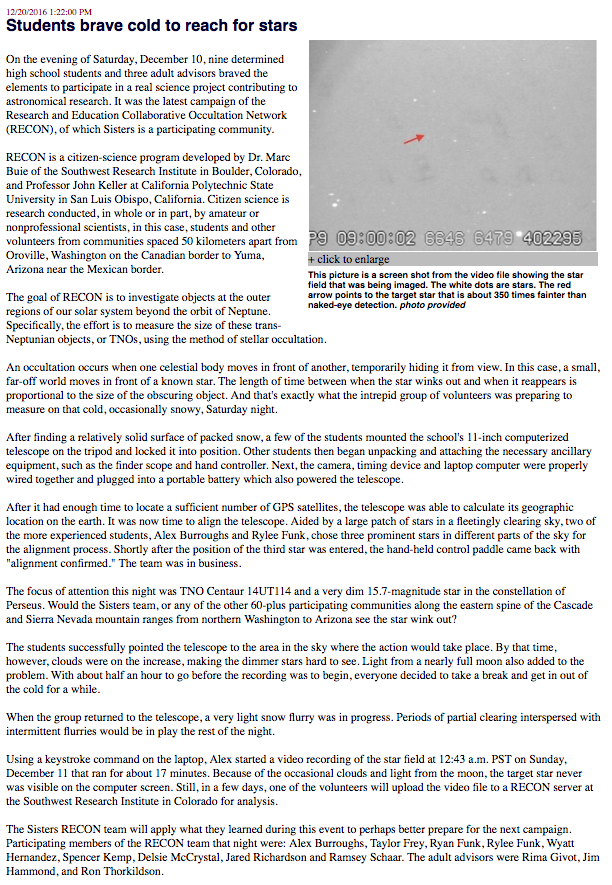This is an exciting week for RECON Principal Investigator Marc Buie as well as RECON team member Robert Reaves from Parker, Arizona. Marc is leading a dual continent occultation campaign involving 22 telescopes being deployed in Argentina and South Africa to measure the shadow of 2014 MU69, the next target for the NASA New Horizons mission. This Friday evening (2017 June 3 at 03:11:50 UT) 22 teams will be deployed on both continents for the first of three occultation opportunities this summer.
Marc invited RECON team member Robert Reaves to join one of these teams for this week’s event. Both Marc and Robert are currently in South America prepping for the big event. For the next occultation opportunity in early July, Charlene Weisenborn from our Searchlight / Boulder City team will be participating as well.
Marc has been centrally in charge of working on predictions for these campaigns using Hubble and Gaia data. In addition to observing form Argentina this week, he will also be flying aboard NASA SOFIA during the July event. According to Marc, our experience setting up the RECON network of over 50 telescope sites has been very valuable in prepping for these campaigns. Because 2014 MU69 is only thought to be around 30 km, the spacing of the network will be much tighter than RECON, with telescopes spaced roughly every 10 km rather than 50 km.
For more information, you can check out the New Horizon’s Webpage and the following post: New Horizons Deploys Global Team for Rare Look at Next Flyby Target
Over the next six weeks, the New Horizons mission team gets an “MU69” preview of sorts – and a chance to gather some critical encounter-planning information – with a rare look at their target object from Earth.
Good luck, Marc, Robert, and all involved in Friday’s campaign!




